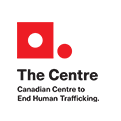*If you are experiencing trafficking and you require supports and services please call the confidential, toll-free, Canadian Human Trafficking Hotline at 1-833-900-1010, day or night. Hotline Response Advocates are available to discuss safety planning, including transportation options.
Trains, planes and automobiles – these are all modes of transportation that are often, and unknowingly, used to facilitate human trafficking activity in Canada. Traffickers use various transportation networks, both domestically and internationally to move human trafficking victims around and avoid detection. The following post provides an overview of how traffickers use these systems and provides tips for transportation sector stakeholders to help them identify human trafficking and make their business less inviting for would be traffickers
In Canada, the transportation industry is used by traffickers at different stages of the recruitment process for domestic sex trafficking. For example, physical locations such as bus depots, train stations and bus stops are known places where the luring and grooming for sex trafficking can happen. Once a victim has been recruited into sex trafficking, traffickers will then often move them in private vehicles, rental cars, cars for hire and on public transportation such as busses, subways, trains and planes from location to location or city to city to maximize profits, access new markets and avoid competition. Frequent movement also helps keep control of the human trafficking victim who may not know where they are or how to get help, and makes it easier for traffickers to evade detection by police.
However, it is not enough for the sector to only train on sex trafficking, as transportation systems are also being used for labour trafficking. Victims of labour trafficking may enter Canada by way of air travel, under the false promise of a job or education opportunity. Labour trafficking victims may also access transportation networks while being trafficked. Public transportation systems such as trains, subways and busses may be part of the daily commute for personnel in known industries where human trafficking happens, such as nannies, cooks, cleaning and maintenance, personal care, etc.
Is anything currently being done to combat trafficking by the transportation industry?
Yes! Various businesses and transportation industry stakeholders have recognized the seriousness of this crime and have begun to advocate against human trafficking and implement organizational trainings. Below are some examples of such initiatives and suggested best practises:
For the trucking industry, organizations like Truckers Against Trafficking educate truck drivers and law enforcement in both Canada and the United States about human trafficking, what to look for and how to report it. To reinforce their outreach, trucking schools and associations across Canada could make this free resource a part of the mandatory training for all new drivers. A moving billboard, like the one recently developed by the Women’s Trucking Federation of Canada is another novel way to share the Canadian Human Trafficking Hotline number and raise awareness amongst the general public.
Taxi and ride share platforms should work to educate drivers about the indicators of human trafficking and how to use the Canadian Human Trafficking Hotline. Having the Hotline number visible in the taxi or on the app is a great way to reach potential survivors. Click here to learn more about The Centre’s anti-trafficking collaboration with Uber Canada.
For the air travel industry, comprehensive anti-trafficking training and policies as well as clear employee reporting guidelines should be part of yearly training for ground crew, cabin staff, airport operators and airport enforcement agencies. Airlines should also consider posting the Hotline number in places that are accessible to staff and passengers like restrooms and on pre-flight informational videos. While some Canadian carriers like West Jet have collaborated with The Centre and other partners to develop anti-trafficking training for staff, the International Transport Association has training available for the air transportation sector as well.
So What’s next?
Unfortunately, both sex and labour trafficking victims share one more thing in common: they often do not have access to safe reliable modes of transportation when leaving a human trafficking situation. So how can the transportation industry help solve this issue?
First, both public and private transportation companies can partner with NGO’s and frontline service organizations to provide vouchers or in-kind fares for survivors leaving abusive situations.
Transportation business companies, associations etc. should also implement person-centered, survivor informed, factual anti-trafficking training and corporate policies. Training should be accompanied by clear reporting protocols, making it easy for employees to report any suspected cases of human trafficking.
Finally, companies should post the Canadian Human Trafficking Hotline number in high traffic, visible locations for staff and passengers so that those who need to see the number can reach out and access supports and services.
What can Governments do to Address Trafficking that Exploits Canada’s Transportation Infrastructure?
- Share the Canadian Human Trafficking Hotline with every new or renewed drivers license permit, passport or work permit issued in Canada.
- Mandate the posting the Canadian Human Trafficking Hotline number at rest stops, on public transit, at airports, marine ports and land border crossings.
- Post the Human Trafficking Hotline number on provincially owned highway screens.
- Implement tailored, survivor driven, data-centric human trafficking awareness training and protocols for law enforcement personnel responsible for patrolling Canada’s highways and CBSA officers at border crossings and airports.
